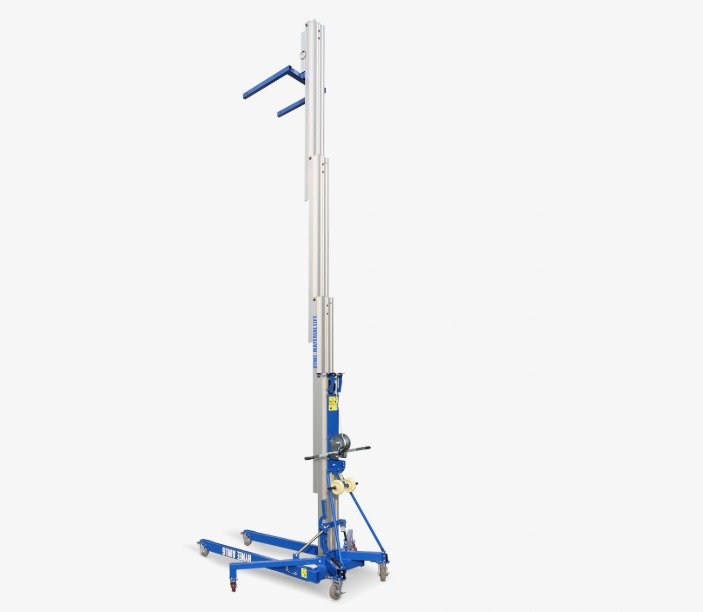
Material lifts are essential tools for industries like construction, warehousing, manufacturing, and events. They make it easier to lift, move, and position heavy items safely and efficiently. However, not all material lifts are the same, and neither are the companies that make them. Choosing the right manufacturer can have a big impact on safety, productivity, and long-term costs.
In this article, we will compare leading material lifts manufacturers and explore the factors that set them apart from each other.
1. Product Quality and Durability
One of the main differences between top manufacturers is the quality of their products. Leading brands use high-grade steel, corrosion-resistant coatings, and precision engineering to make lifts last longer.
For example, some manufacturers invest in advanced welding and assembly methods that ensure the frame can handle repeated heavy use without bending or cracking. Others may focus on using lightweight but strong materials like aluminum for easier handling.
When comparing companies, it is important to look at product specifications, load capacity, and how the lifts perform in real working conditions.
2. Innovation in Design
Innovation is another area where material lifts manufacturer can stand out. Some companies design lifts that can be quickly assembled and disassembled, making them perfect for mobile teams or event setups. Others focus on compact designs for tight spaces.
Advanced features, such as self-locking mechanisms, powered lifting options, and ergonomic handles, also make a big difference. A manufacturer that keeps improving its designs is often more responsive to customer needs and industry trends.
3. Customization Options
Not all industries have the same lifting requirements. A reliable material lifts manufacturer will offer customization services. This can include changing platform sizes, adjusting load capacity, or creating special attachments for unique tasks.
Some companies have in-house design teams that work closely with customers to build a lift that fits their exact needs. This level of flexibility is a major advantage for businesses that handle specialized equipment or materials.
4. Compliance with Safety Standards
Workplace safety is a top priority in any lifting operation. Leading manufacturers follow strict safety guidelines, such as ANSI (American National Standards Institute) or CE (European Conformity) standards.
High-quality lifts often come with safety features like overload protection, non-slip platforms, and strong locking systems. Some manufacturers go beyond basic standards and test their products in extreme conditions to ensure reliability.
When comparing brands, it is important to ask for safety certifications and proof of testing.
5. Range of Products
A manufacturer’s product range can tell you a lot about their expertise. Some companies focus only on manual material lifts, while others offer electric and hydraulic models as well.
Having a wide range of products means the manufacturer can serve different industries and applications. This flexibility allows customers to choose the lift that best matches their work environment, budget, and lifting needs.
6. After-Sales Support
Even the best material lift will need maintenance over time. Leading manufacturers provide strong after-sales support, including spare parts, repair services, and technical assistance.
Some companies have nationwide service centers or trained technicians who can visit your site for repairs. Others offer online troubleshooting guides and video tutorials for quick problem-solving.
Good after-sales support can save time, reduce downtime, and extend the life of your equipment.
7. Warranty and Service Agreements
Warranty policies are another key factor when comparing material lifts manufacturers. Some offer standard one-year warranties, while others may provide two or more years of coverage.
Extended service agreements can be a big advantage, especially for businesses that rely on their lifts daily. A longer warranty often reflects the manufacturer’s confidence in product durability.
8. Pricing and Value for Money
While price is important, it should not be the only deciding factor. Cheaper lifts might save money upfront but could lead to higher maintenance costs later.
The best approach is to compare value for money, not just the price tag. This means looking at the balance between cost, quality, features, and support. Sometimes paying a little more for a reputable brand can result in lower costs over the equipment’s lifespan.
9. Reputation and Customer Reviews
Customer feedback can be one of the most reliable ways to compare manufacturers. Positive reviews often highlight product reliability, ease of use, and good customer service. Negative reviews can reveal common problems like delays in spare parts, poor build quality, or unhelpful support teams.
Checking online reviews, case studies, and testimonials can help you get a clearer picture of each manufacturer’s strengths and weaknesses.
10. Global Reach and Availability
Some material lifts manufacturers operate locally, while others have a global presence. If your business works across multiple locations or countries, choosing a manufacturer with international service and delivery can make operations smoother.
Global material lifts manufacturer often have better logistics, spare parts availability, and technical support in different regions.
Final Thoughts
When comparing leading material lifts manufacturers, it is important to look beyond the basic product specifications. Factors such as quality, safety, innovation, customization, after-sales support, and reputation all play a major role in finding the right partner for your business.
By taking the time to research and compare these aspects, you can choose a manufacturer that will deliver reliable equipment, improve workplace safety, and help your business operate more efficiently.